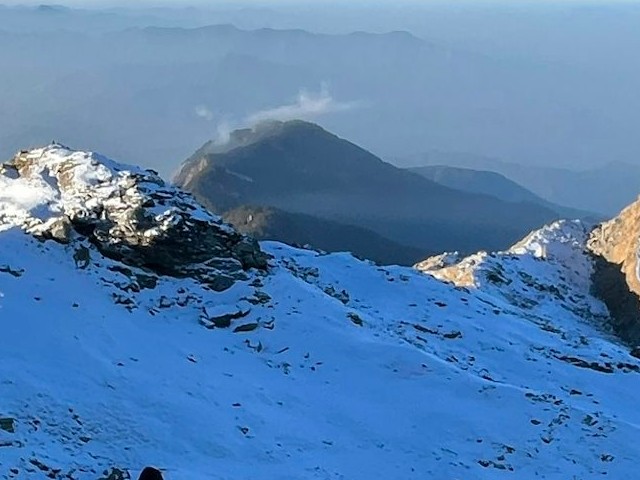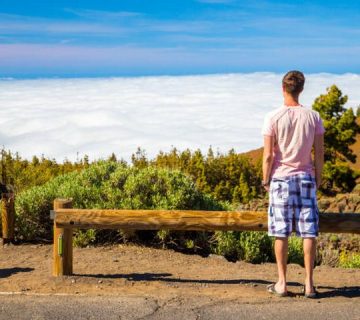High-Altitude Trekking in Tanzania: A Journey to the Roof of Africa
Embark on a thrilling adventure that transcends the ordinary—high-altitude trekking in Tanzania is not just a quest towards the summits; it’s a journey into the heart of nature’s splendor and your own inner strength. From the rolling foothills to the majestic peaks, Tanzania offers some of the most breathtaking high-altitude treks in the world. Join us, Kilimanjaro Centre for Trekking and Ecotourism (KCTE), as we guide you through lush rainforests, alpine deserts, and finally to the icy caps of the tallest free-standing mountain in the world—Mount Kilimanjaro.
Why Choose Tanzania for High-Altitude Trekking?
Unmatched Beauty
Tanzania’s high-altitude landscapes offer more than just hiking; they offer panoramas that stretch the boundaries of beauty. From the iconic snow-capped summit of Kilimanjaro to the rugged terrains of Mount Meru, each step is accompanied by awe-inspiring views that promise to captivate and motivate.
Rich Biodiversity
As you ascend these majestic mountains, you transition through a tapestry of ecological zones. Starting from the cultivation belt, moving through rainforests teeming with wildlife, navigating moorlands, and finally reaching alpine deserts, each zone offers unique flora and fauna, making your trek a multidimensional experience.
Cultural Immersion
Trekking in Tanzania also offers a unique cultural immersion. The Chagga people, native to the Kilimanjaro region, have a rich history intertwined with these mountains. Engaging with local guides and porters provides insight into the indigenous culture and traditions, enriching your trekking experience.
Planning Your High-Altitude Trek: Kilimanjaro Awaits!
Choosing the Right Route
Kilimanjaro boasts several routes, each with its own unique attractions:
- Marangu Route: Often called the “Coca-Cola” route, this is the most established and straightforward path to Uhuru Peak, featuring hut accommodations.
- Machame Route: Known as the “Whiskey” route, this is more challenging but scenically rewarding, with stunning views and varied terrain.
- Lemosho Route: A longer, more remote route with higher success rates, offering a serene and gradual ascent.
Best Time to Trek
The optimal times for trekking are during the dry seasons: January to mid-March and June to October. These months offer the clearest skies and safest trekking conditions.
What to Pack
Packing right is crucial for a successful high-altitude trek. Essentials include:
- Thermal layers for the freezing nights
- A sturdy pair of hiking boots
- Sunscreen, sunglasses, and a hat for protection against the sun
- Plenty of water and snacks
- A good camera to capture the surreal landscapes
Remember, every extra kilogram counts when you’re climbing towards the sky, so pack wisely!
Safety and Acclimatization
Health Precautions
High-altitude trekking can expose you to risks such as altitude sickness. KCTE ensures all trekkers are well-informed about altitude sickness and its prevention, which includes proper acclimatization days built into each itinerary.
Skilled Guides and Porters
Our guides and porters are the backbone of your trekking experience. They are trained in first aid and emergency response, ensuring you’re safe and supported from start to finish. Their expertise not only in navigation but also in local flora and fauna adds layers to your trekking experience.
Beyond Kilimanjaro: Other High-Altitude Treks in Tanzania
Mount Meru
Standing at 4,566 meters, Mount Meru serves as an excellent acclimatization hike before Kilimanjaro or a formidable trek in its own right. Its slopes are rich in wildlife, giving trekkers a chance to spot buffaloes, giraffes, and elephants.
Ol Doinyo Lengai
Known as the "Mountain of God" in the Maasai language, this active volcano offers a challenging trek and a rare opportunity to see volcanic activity up close. The views of the Great Rift Valley from the summit at sunrise are phenomenal.
Connect with Kilimanjaro Centre For Trekking and Ecotourism (KCTE)
Ready to take the step into the extraordinary? At KCTE, we specialize in creating personalized, environmentally responsible treks that are more than just hiking; they are comprehensive experiences crafted to meet your adventurous spirit and love for nature. Whether you’re a seasoned trekker or a first-time adventurer, we welcome you to explore the heights of Tanzania with us.
FAQs about High-Altitude Trekking in Tanzania
Q: Do I need special training for high-altitude trekking?
A: While you don’t need to be an athlete, basic fitness levels are necessary. We recommend engaging in cardiovascular activities such as walking, jogging, or cycling in the months leading up to your trek.
Q: How do I prevent altitude sickness?
A: Proper acclimatization is key. Our itineraries are designed to allow your body to adjust to higher altitudes gradually. Staying hydrated and avoiding alcohol can also help.
Q: Can I trek Kilimanjaro solo?
A: For safety reasons, solo treks are not permitted. However, KCTE can arrange for private or group treks that fit your schedule and preferences.
Q: What is included in a KCTE trekking package?
A: Our packages typically include full board accommodation, all park fees, guide and porter services, rescue fees, and transfers to and from the mountain.
Ready to Reach the Summit?
Whether it’s the allure of Kilimanjaro’s summit or the challenging paths of Mount Meru that call you, high-altitude trekking in Tanzania offers an unparalleled adventure. Book your journey with Kilimanjaro Centre for Trekking and Ecotourism (KCTE) today, and step into a world where the earth touches the sky. Let’s conquer the heights together!
For more information, visit our website or contact us directly. The mountains are calling, and you must go!




